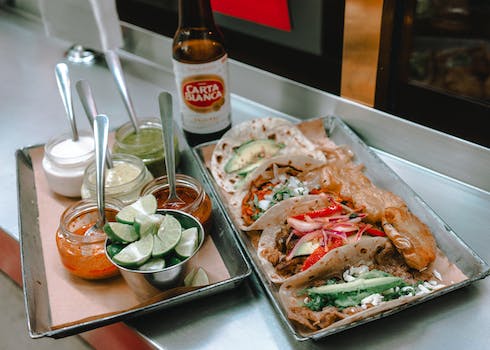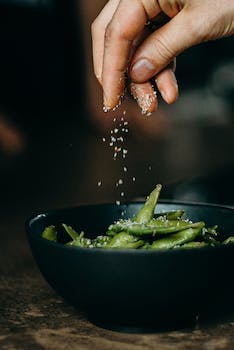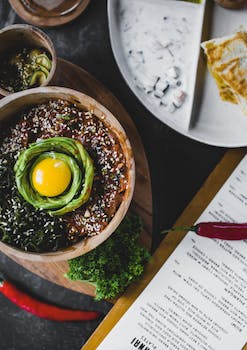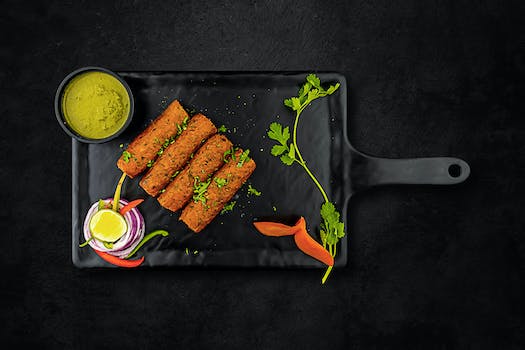

-
Table of Contents
Discover the flavors that define South Africa's culinary legacy.
Introduction
South Africa's rich culinary heritage is a reflection of its diverse cultural influences and abundant natural resources. From traditional African dishes to European and Asian-inspired cuisine, the country's food scene offers a tantalizing array of flavors and culinary traditions. This article aims to delve into the depths of South Africa's culinary heritage, exploring its unique ingredients, traditional cooking methods, and iconic dishes that have shaped the nation's gastronomic identity. Join us on a journey of discovery as we unveil the vibrant tapestry of South Africa's culinary traditions.
Traditional South African Dishes: Exploring the Flavors and History
Unveiling South Africa's Rich Culinary Heritage
South Africa is a country known for its diverse culture and vibrant history. This diversity is also reflected in its cuisine, which is a melting pot of flavors and influences from various ethnic groups. Traditional South African dishes not only tantalize the taste buds but also tell a story of the country's past.
One of the most iconic dishes in South Africa is bobotie. This flavorful dish is a fusion of Dutch, Indonesian, and Cape Malay influences. It consists of spiced minced meat, usually beef or lamb, mixed with onions, garlic, and a blend of aromatic spices such as curry powder, turmeric, and cinnamon. The meat mixture is then topped with a savory custard made from eggs and milk and baked until golden brown. Bobotie is often served with yellow rice, chutney, and a variety of sambals, which are condiments made from chopped fruits or vegetables.
Another traditional South African dish that showcases the country's culinary heritage is boerewors. Boerewors, which translates to "farmer's sausage," is a type of sausage made from coarsely ground beef, pork, or lamb, mixed with a blend of spices such as coriander, cloves, and nutmeg. The sausage is then stuffed into natural casings and grilled or pan-fried until cooked through. Boerewors is a popular choice for braais, which are South African barbecues, and is often enjoyed with a side of pap, a staple made from maize meal.
Bunny chow is a unique South African dish that originated in Durban, a city with a large Indian community. It consists of a hollowed-out loaf of bread filled with curry, typically made with chicken or mutton. The origins of bunny chow can be traced back to the Indian laborers who worked in the sugar cane fields and needed a portable and filling meal. Today, bunny chow is a beloved street food in South Africa and is often enjoyed with a side of sambals or pickles.
Potjiekos is a traditional South African stew that is cooked in a cast-iron pot over an open fire. The name "potjiekos" translates to "small pot food" and refers to the cooking method. The stew typically consists of meat, such as beef, lamb, or game, combined with vegetables, such as potatoes, carrots, and onions. The flavors of the stew are enhanced by the slow cooking process, which allows the ingredients to meld together and create a rich and hearty dish. Potjiekos is often enjoyed with a side of maize meal or bread.
In addition to these traditional dishes, South Africa is also known for its wide variety of game meats, such as kudu, springbok, and ostrich. These meats are often prepared using traditional cooking methods, such as braaing or potjiekos, and are prized for their unique flavors and lean profiles.
Exploring the flavors and history of traditional South African dishes is a journey that takes you through the country's rich culinary heritage. From the fusion of Dutch, Indonesian, and Cape Malay influences in bobotie to the Indian-inspired bunny chow, each dish tells a story of the diverse cultures that have shaped South Africa's cuisine. Whether you're enjoying a braai with boerewors or savoring a potjiekos cooked over an open fire, traditional South African dishes are sure to leave a lasting impression on your taste buds.
Fusion Cuisine: The Intersection of South African and International Culinary Traditions

Fusion Cuisine: The Intersection of South African and International Culinary Traditions
South Africa is a country known for its diverse culture and rich history. This diversity is not only reflected in its people and landscapes but also in its culinary traditions. South African cuisine is a fusion of various influences, blending the flavors and techniques of indigenous African, European, and Asian cultures. This unique combination has resulted in a vibrant and diverse culinary heritage that is truly one-of-a-kind.
One of the most fascinating aspects of South African cuisine is its fusion with international culinary traditions. Over the centuries, South Africa has been a melting pot of cultures, with people from all over the world settling in the country. This has led to the blending of different cooking styles and ingredients, creating a culinary landscape that is both familiar and exotic.
One example of this fusion is the Cape Malay cuisine, which combines the flavors of Indonesian, Malaysian, and Indian cooking with traditional South African ingredients. The result is a tantalizing array of dishes that are spicy, aromatic, and full of flavor. Cape Malay curries, for instance, are known for their rich and complex flavors, combining spices like cinnamon, cardamom, and cloves with meat or vegetables.
Another example of fusion cuisine in South Africa is the influence of French and Dutch cooking. The French Huguenots, who settled in the Western Cape in the 17th century, brought with them their culinary traditions, including the art of winemaking. Today, South Africa is renowned for its world-class wines, which are a testament to the country's French heritage.
Dutch influences can be seen in the popular South African dish, bobotie. This dish is a delicious combination of minced meat, spices, and dried fruit, topped with a savory custard. It is often served with yellow rice and chutney, creating a unique blend of sweet and savory flavors.
In recent years, South African cuisine has also embraced the flavors of Asia. The country's large Chinese and Indian communities have had a significant impact on the local food scene. Chinese-inspired dishes like sweet and sour chicken and chow mein are now staples in many South African households. Indian cuisine, with its aromatic spices and rich curries, has also become increasingly popular.
The fusion of South African and international culinary traditions has not only enriched the country's food culture but has also given rise to a new generation of innovative chefs. These chefs are pushing the boundaries of traditional South African cuisine, experimenting with new flavors and techniques to create exciting and unique dishes.
In conclusion, South Africa's culinary heritage is a testament to its diverse culture and history. The fusion of indigenous African, European, and Asian influences has resulted in a vibrant and diverse food culture that is truly unique. From Cape Malay curries to French-inspired wines and Chinese-inspired dishes, South African cuisine is a celebration of flavors and traditions from around the world. So, the next time you find yourself in South Africa, be sure to indulge in the country's rich culinary heritage and experience the magic of fusion cuisine.
Indigenous Ingredients: Discovering the Unique Flora and Fauna that Shape South African Cuisine
South Africa is a country known for its diverse culture, breathtaking landscapes, and rich history. But one aspect of South Africa that often goes unnoticed is its vibrant culinary heritage. The country's cuisine is a reflection of its diverse population and the unique flora and fauna that shape its culinary traditions.
Indigenous ingredients play a crucial role in South African cuisine, adding depth and complexity to dishes. These ingredients are sourced from the land and waters of the country, showcasing the abundance of natural resources that South Africa has to offer.
One of the most iconic indigenous ingredients in South African cuisine is the rooibos plant. Rooibos, meaning "red bush" in Afrikaans, is a plant native to the Western Cape region. Its leaves are used to make a popular herbal tea that is enjoyed both locally and internationally. Rooibos tea has a distinct earthy flavor and is known for its numerous health benefits. It is often used as a base for refreshing iced teas or infused into desserts and baked goods.
Another unique ingredient that shapes South African cuisine is the marula fruit. The marula tree is native to the southern regions of Africa and produces small, yellow fruits that are rich in vitamin C. These fruits are used to make a popular liqueur called Amarula, which has a creamy, caramel-like flavor. Amarula is often enjoyed on its own or used as an ingredient in cocktails and desserts.
South Africa's coastal regions are home to a variety of seafood that plays a significant role in the country's cuisine. The Cape Malay community, for example, has a rich culinary tradition that incorporates seafood such as snoek, a type of fish found in the waters around Cape Town. Snoek is often braaied (barbecued) and served with a spicy apricot chutney, creating a unique blend of flavors that is synonymous with Cape Malay cuisine.
Inland, the country's grasslands are home to a wide range of game animals, which have been a staple in traditional South African cuisine for centuries. Game meat such as kudu, springbok, and ostrich are lean and flavorful, offering a unique alternative to more common meats like beef and chicken. These meats are often prepared using traditional cooking methods such as potjiekos, a slow-cooked stew made in a cast-iron pot over an open fire.
South Africa's culinary heritage is also influenced by its indigenous communities, who have been using local ingredients for generations. The San people, for example, have a deep knowledge of the plants and animals in their environment and have developed unique ways of preparing food. They use ingredients such as wild spinach, buchu, and honeybush tea to create dishes that are both nutritious and delicious.
Exploring South Africa's rich culinary heritage is not only a feast for the taste buds but also an opportunity to learn about the country's history and culture. Indigenous ingredients are at the heart of South African cuisine, showcasing the country's natural resources and the creativity of its people. From rooibos tea to game meat stews, each dish tells a story and offers a glimpse into the diverse flavors that make South African cuisine truly unique. So, the next time you find yourself in South Africa, be sure to indulge in the country's culinary delights and experience the rich tapestry of flavors that await you.
Q&A
1. What is South Africa's culinary heritage?
South Africa's culinary heritage is diverse and influenced by various cultures, including indigenous African, Dutch, Malay, Indian, and British cuisines.
2. What are some traditional South African dishes?
Some traditional South African dishes include bobotie (a spiced minced meat dish), boerewors (a type of sausage), biltong (dried cured meat), potjiekos (a slow-cooked stew), and malva pudding (a sweet dessert).
3. How has South Africa's culinary heritage been preserved?
South Africa's culinary heritage has been preserved through the passing down of traditional recipes and cooking techniques from generation to generation, as well as through the establishment of culinary schools and the promotion of traditional dishes in restaurants and food festivals.
Conclusion
In conclusion, South Africa's rich culinary heritage is a testament to the diverse cultures and influences that have shaped the country's cuisine. From traditional dishes like bobotie and boerewors to fusion creations that blend African, European, and Asian flavors, South African cuisine offers a unique and flavorful experience. Exploring the country's culinary heritage not only provides a taste of its history but also showcases the vibrant and diverse culinary landscape that exists in South Africa today.












